Mint Needs Regular Harvesting – It Prevents Spreading And Encourages Fresh Growth

Reviewed By ROY NICOL

Roy is a Professional Gardener and Horticultural Consultant, specialising in large garden year-round maintenance and garden development. He is an RHS Master of Horticulture and uses his research in the application of no-dig methods in ornamental garden settings. Roy has been a Professional Gardener for more than six years and is a member of the Chartered Institute of Horticulture, Professional Gardener's Guild and Association of Professional Landscapers (Professional Gardener).
Contributions From EMILY CUPIT

Emily is a Gardening Writer, Photographer and Videographer from Derbyshire, UK. She is the Founder of Emily's Green Diary - a community of more than 75,000 people who share in her gardening journey.
IN THIS GUIDE
MINT GUIDES
Harvesting
Planting
Propagation
Mint is so easy to grow that, once planted, it tends to grow itself.
In fact, it does that a little too well and can spread quickly by underground roots, meaning that when it’s grown outside, it needs regular harvesting.
Another alternative to avoid such takeovers is to confine mint to containers.
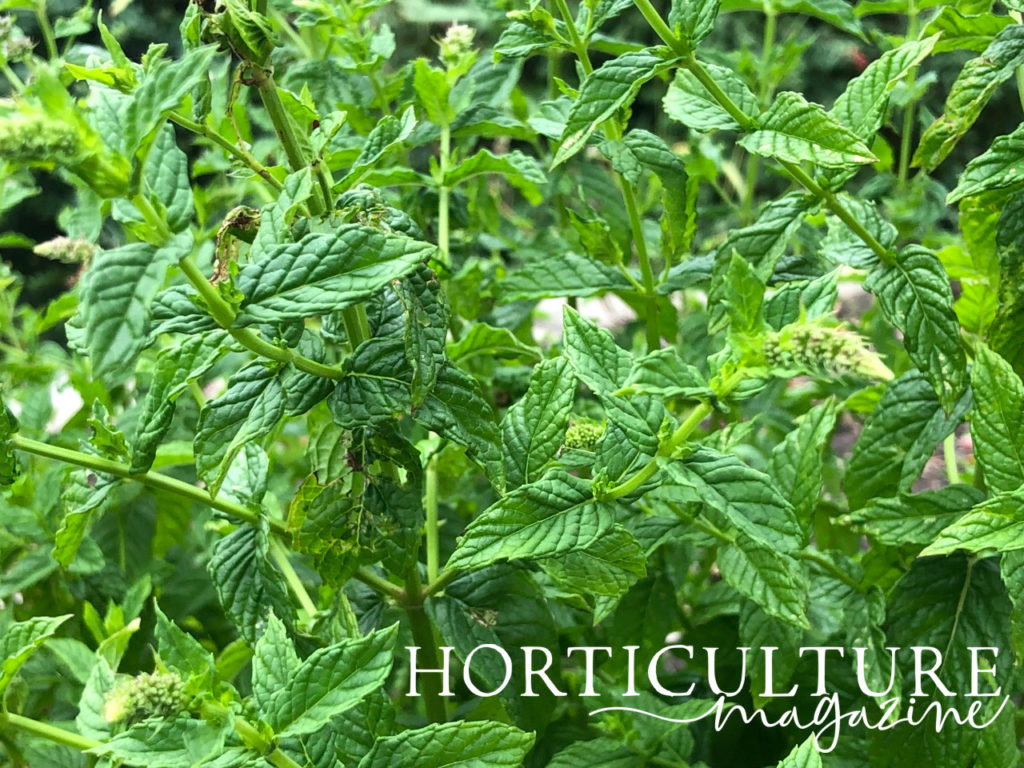
It is a great pot plant for the kitchen window, as its little leaves are a decorative brilliant green and are aromatic with air-freshening qualities.
As for the technique of harvesting mint from the garden patch, to be honest, this is one of those few ultra-robust plants that you can pick or cut off any old way without fear of harming it.
Still, you can maximise the quality of your harvest by choosing the right moment and the right leaves, which will also maximise the growth of the plants.
You can do so by using the process that we explain below:
| Difficulty | Easy |
| Equipment Required | Optional gardening gloves, optional scissors |
| When To Harvest | May through October; July is the prime month |
1) The Window Of Opportunity
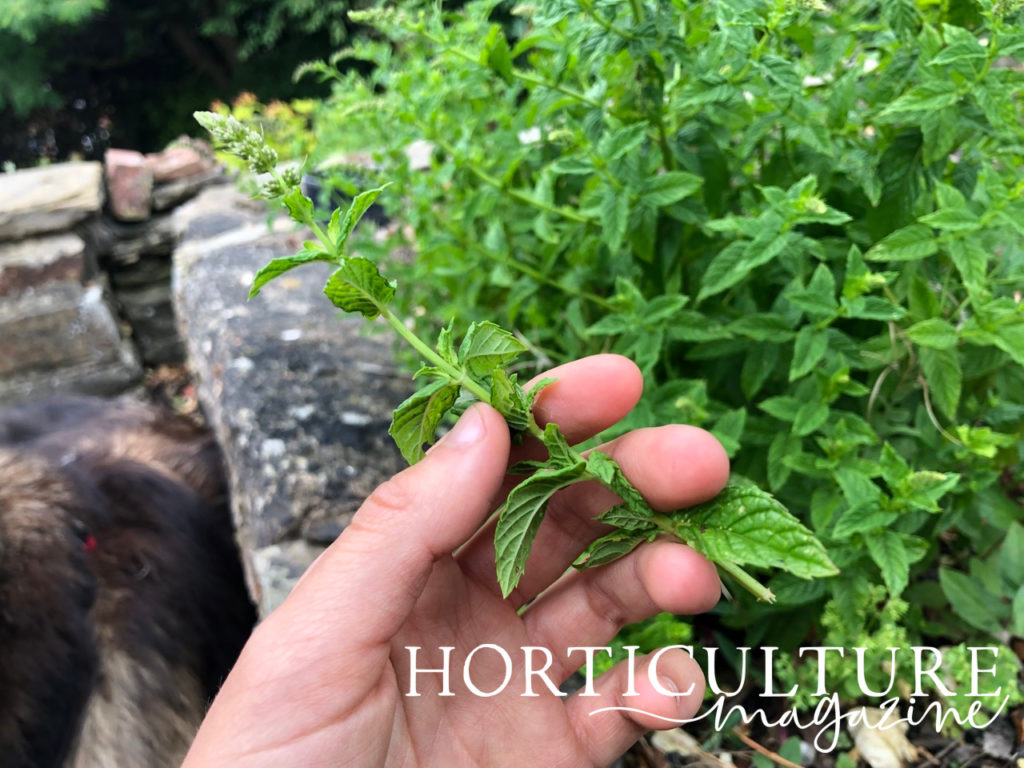
Mint can be harvested on an ongoing basis clear from May through October and this period can be longer in some regions of the UK.
However, there is a window of opportunity that you should exploit.
This is the period just before mint plants come into flower.
For most varieties, this will be sometime in July.
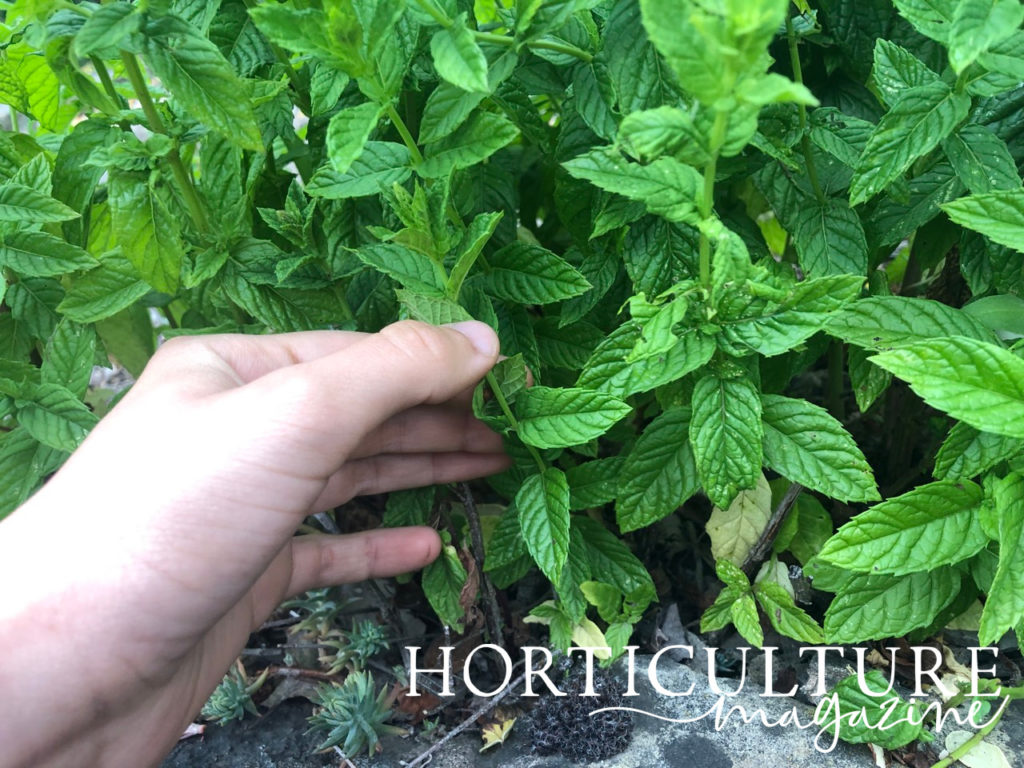
At this time, mint leaves are particularly rich in oil and full of that minty flavour.
Keep an eye on your mint plants from late June onwards; when you see them budding, that window of opportunity has opened.
Mint flowers look like tiny bottlebrushes and in bud form they are undeveloped and green.
2) Pick Leaves As Needed
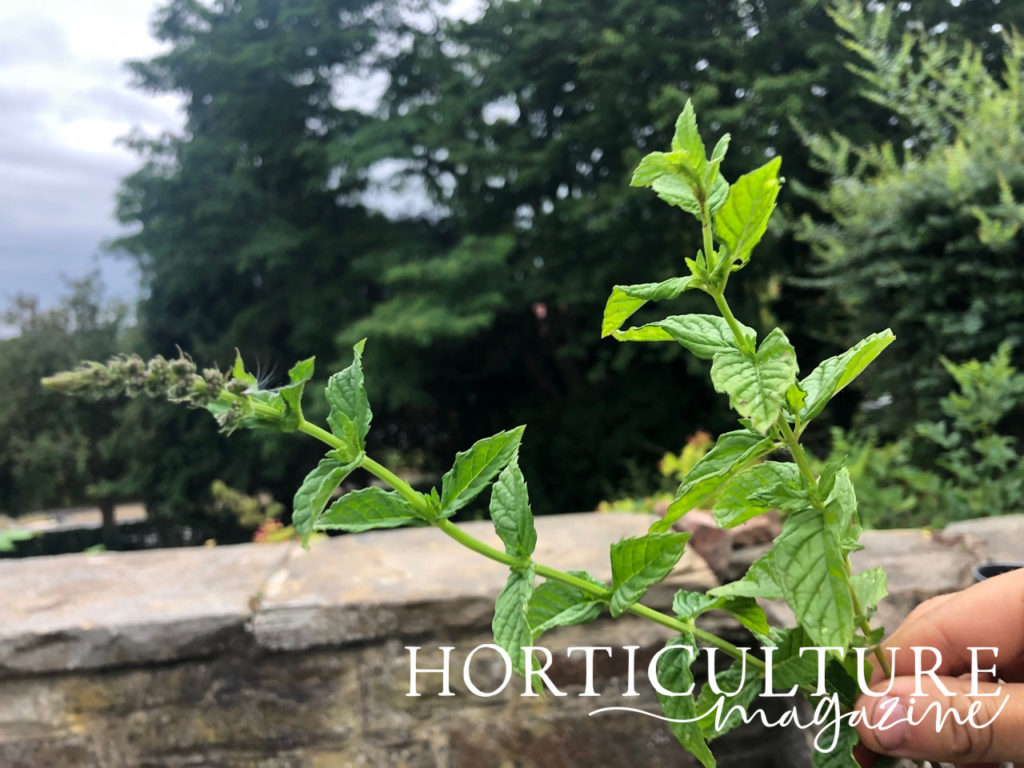
Mint may be harvested continually from May into October on an as-needed basis.
This should be done in the morning, preferably mid-morning.
To harvest mint, simply pluck (or use a small pair of scissors) selected little bunches of leaves at their stems by pinching them off with the thumb and forefinger just above a set of leaves – it’s from this point the plant will put on fresh growth ready for the next harvest.
The smallest, youngest growth will have the freshest, sharpest flavour.
Try to pick stems and leaves evenly among your mint plants, if only to retain a balanced shape.
3) The ‘Harvest Proper’

You can collect a bigger harvest in one go, whilst at the same time keeping your mint plants in good trim by pruning, which will also encourage fresh growth.
Using a pair of scissors, cut a number of the plants at the main stem just below a set of leaves about a third of the way down (you can cut off less if you choose).
Do not cut plants unevenly; snip them so as to strike a balance between harvested plants and those left as-is.
Otherwise, aesthetics will be poor as the growth will be uneven.
On your next go-round a month or two later, you can harvest from the plants you have previously left.
4) Storing Mint
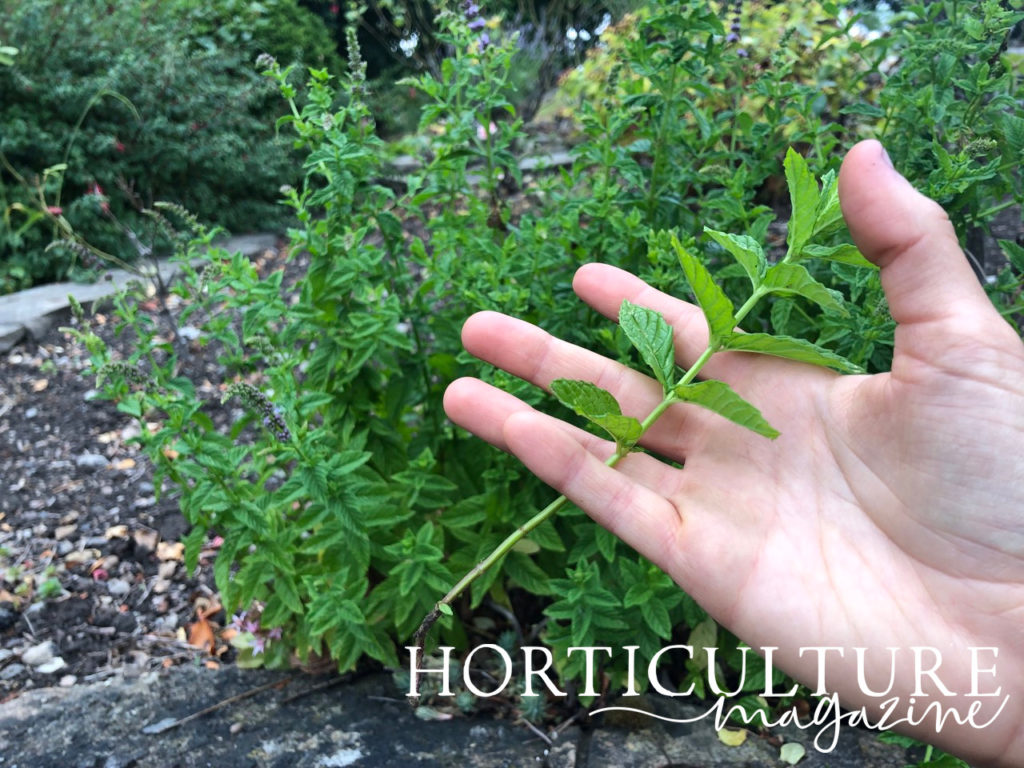
Mint is best at its freshest.
The style of picking outlined in step two should be utilised to obtain fresh mint for the kitchen, but when you harvest mint as outlined in step three, you may need to store it.
First, wash the mint in running water or swirl it around in a bowlful of water.
To store for a couple of days, wrap the mint in a sheet of newspaper and put it in the fridge’s crisper or to store for several days, put sprigs of mint in a glass of water, similar to flowers in a vase, and put it in the fridge.
To store for 8-10 months, air dry the mint (though it does not need to be fully dried out), put it in a zip-lock bag, squeeze out the air, zip up the bag, and put it in the freezer.
Another way to store it for several months is to chop up the mint and put small portions into an ice-cube tray.
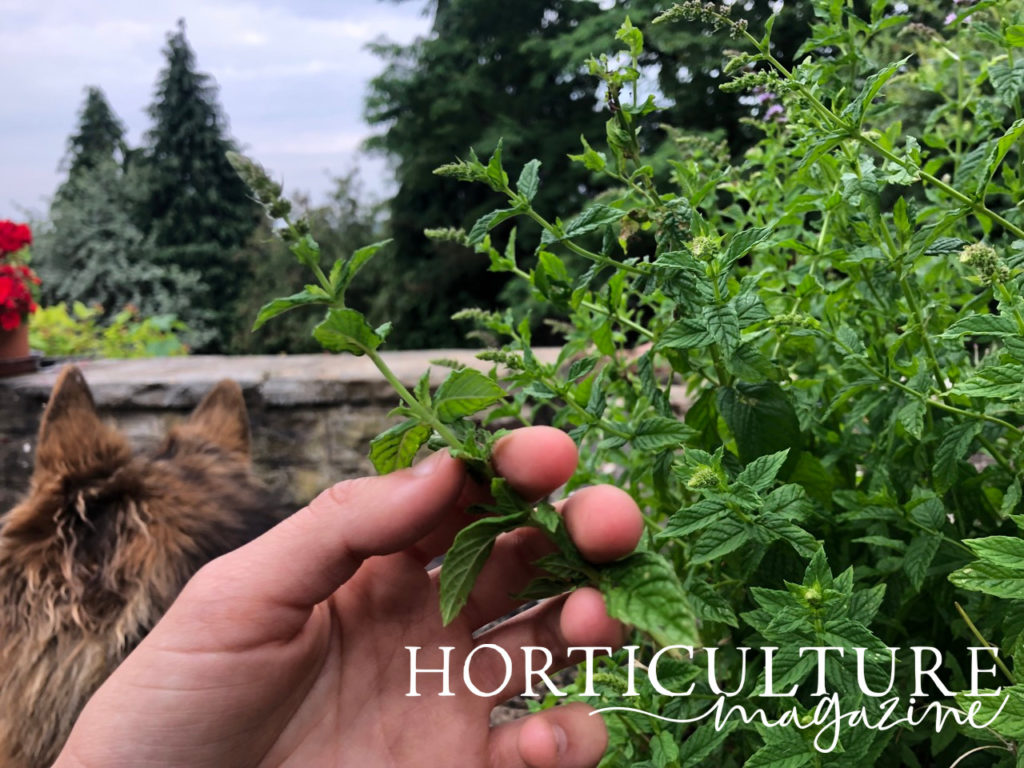
Add water, and put in the freezer, then take out the mint ice cubes as and when you need them.
Finally, you can store dried mint for up to 18 months by making small bundles of mint, tying up the stems with cotton twine, and then suspending them, say from hooks or a shelf, for drying.
Use a dark, dry room for this purpose.
You could run a standalone fan at a slow speed to speed up the drying process.
After a couple of weeks, the mint will have dried out and can then be crushed, crumbled or chopped up, and put in an air-tight mason jar.

